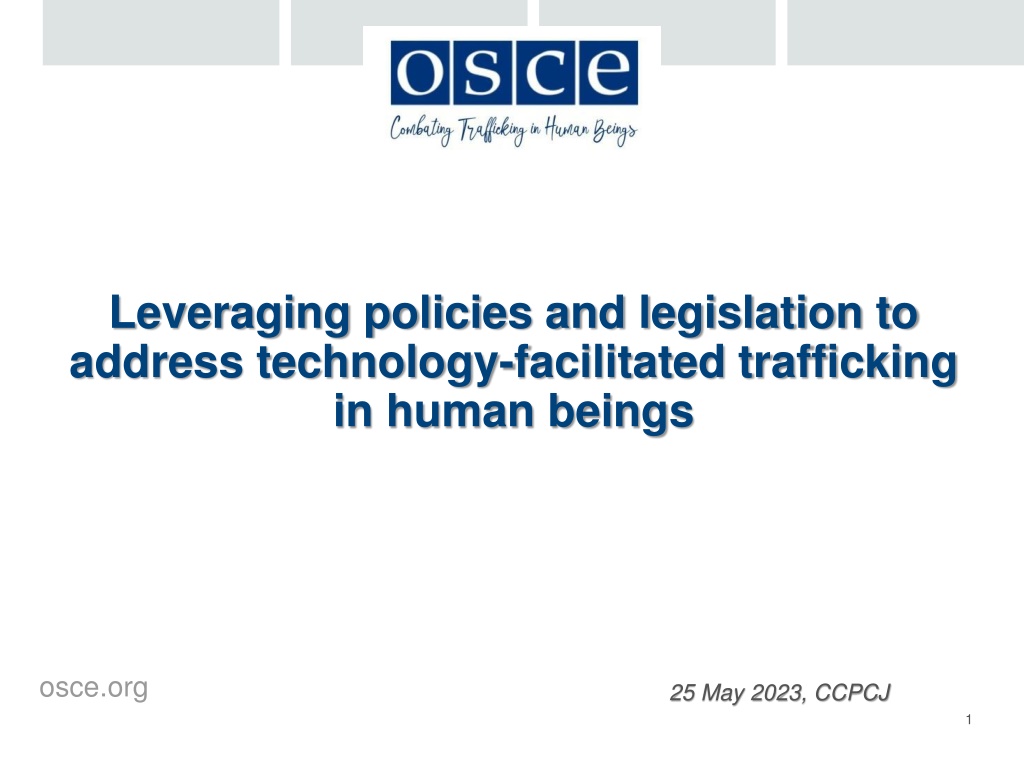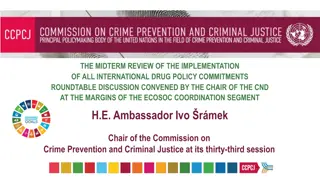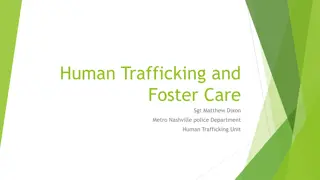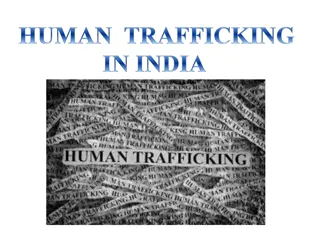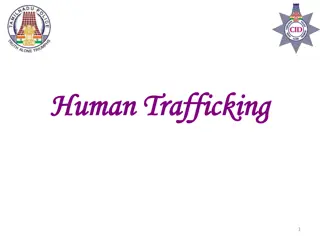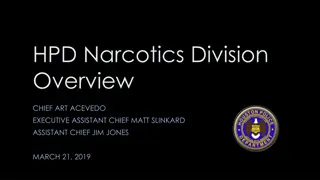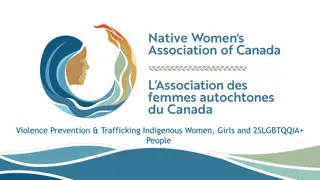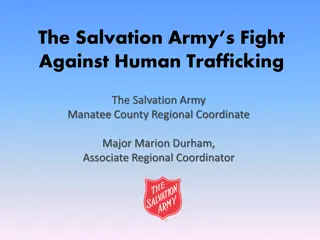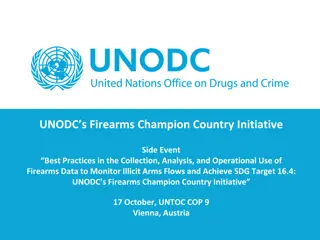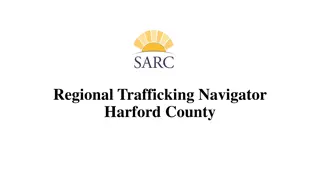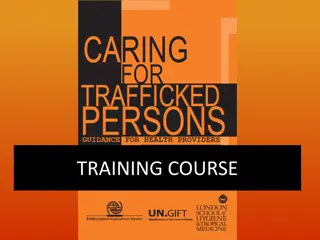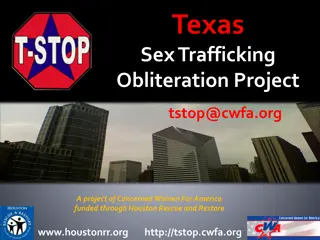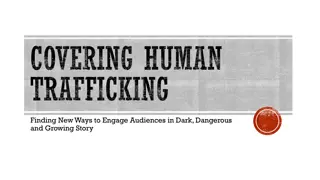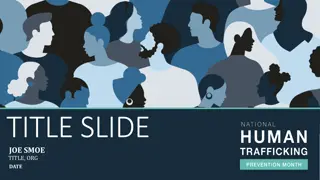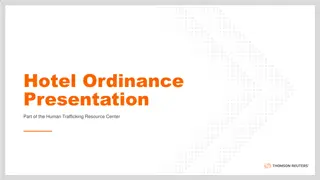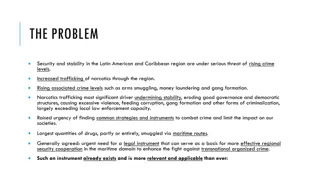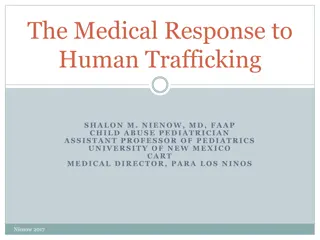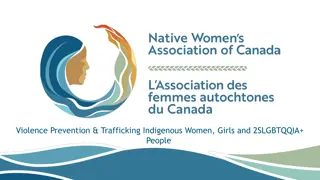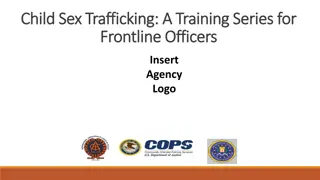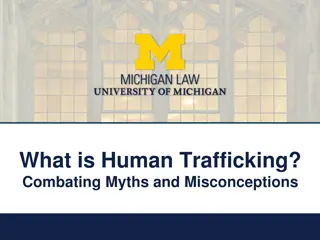Addressing Technology-Facilitated Trafficking Through Policy and Legislation
Explore the role of technology in human trafficking, identify shortcomings in current policies, and understand the importance of focusing on online platforms. Learn about proposed solutions and recommendations for addressing tech-facilitated trafficking.
Download Presentation

Please find below an Image/Link to download the presentation.
The content on the website is provided AS IS for your information and personal use only. It may not be sold, licensed, or shared on other websites without obtaining consent from the author. Download presentation by click this link. If you encounter any issues during the download, it is possible that the publisher has removed the file from their server.
E N D
Presentation Transcript
Leveraging policies and legislation to address technology-facilitated trafficking in human beings osce.org 25 May 2023, CCPCJ 1
Shortcomings in the policy and legal response Current international and regional legal frameworks, including the Palermo Protocol do not explicitly recognize the role of technology in facilitating THB; International frameworks governing cybercrime do not explicitly incorporate references to THB, in particular of adults; This includes the Council of Europe Convention on Cybercrime. It does not address a broader set of illicit activity conducted using information technologies, including THB offences involving adult victims, although it focuses considerably on CSAEO.
Shortcomings in the policy and legal response New policy and legislative documents enacted across countries, do not have specific reference to THB, including: - European Union Digital Safety Act; - New European Union Directive on CTHB; - Australia Online Safety Act 2021; - United Kingdom Online Safety Bill; - Comprehensive International Convention for Countering the Use of ICT for Criminal Purposes.
Policy and legal considerations - State authorities - Victims / survivors - NGOs - Academia - Private Technology Sector/Online Platforms
Why focus policies on online platforms Their resources and infrastructure are being misused by traffickers Their services are involved in every stage of the THB crime They have access to data and information and can see patterns They have the financial resources and expertize Their action/inaction facilitates THB Concrete cases of online platforms being involved in THB
What do we propose? - Provides an analysis of how tech- facilitated THB has been approached from the perspective of policy and legislation across the OSCE participating States. - Examines the policies and practices adopted by the private sector and civil society organizations. - Offers recommendations for policy and legislative responses by OSCE participating States to the misuse of technology to exploit victims
Current policy approaches to online platforms To date, governments have generally allowed the technology sector to self-regulate and use voluntary compliance on the topic of combating exploitation and THB. Terms of Use. Harmonized responses across the technology industry, often through the establishment of multi-stakeholder initiatives There are considerable shortcomings in self-regulatory approaches, particularly when compliance is voluntary
Specific issues related to regulating the technology industry on THB Prevention a. Safety by design b. Age and Consent Verification c. Government-issued guidance Monitoring a. Intersection between monitoring and liability b. Tensions between monitoring and privacy
Specific issues related to regulating the technology industry on THB Content removal and blocking of websites a. Reporting and notice b. Determining illegality c. Removal d. The challenge of jurisdiction in regulating content removal in the global online marketplace e. Taking down or blocking websites
Specific issues related to regulating the technology industry on THB Liability for online platforms a. Developing jurisprudence on liability b. Challenges for establishing liability of online platforms c. Uneven approaches across countries Transparency regarding online platform actions
Thank you! radu.cucos@osce.org @osce_cthb osce.org/secretariat/ trafficking
